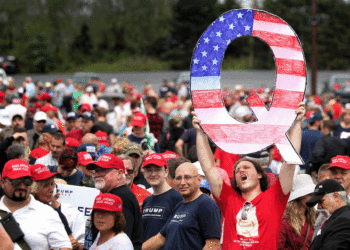The opinion articles in this week’s print edition of the Jewish World have a theme: the civil unrest in Baltimore, after the death of Freddie Gray in police custody. Last week, six Baltimore cops were charged with Gray’s murder and other serious felonies in connection with his death.
When I entered Macalester College, in 1968, incoming freshmen were asked to read two books: The Autobiography of Malcolm X, a collaboration with Alex Haley, the journalist who later became famous for Roots; and the Report of the National Advisory Commission on Civil Disorders, also known as the Kerner Commission Report, after the group’s chairman, Illinois Gov. Otto Kerner.
As to the latter volume, President Lyndon B. Johnson appointed the commission in the summer of 1967, while rioting was underway in Detroit. America’s cities literally were burning in the 1960s: Los Angeles, the Watts riots, in 1965; Chicago, riot on Division Street, 1966; and Newark, a riot in 1967.
President Johnson sought answers to three questions: “What happened? Why did it happen? What can be done to prevent it from happening again and again?”
As we have seen, in the case of Ferguson and Baltimore, this country has not successfully dealt with institutionalized racism and endemic urban poverty. The fire next time is here, again.
The preceding list of urban riots does not include Minneapolis, where a 1967 riot burned out a number of Jewish-owned businesses on Plymouth Avenue. The AJW editorial in the Aug. 4, 1967, edition addressed “the Negro violence on Plymouth Avenue,” noting, in part: “The violence we experienced here is merely one tile in the monstrous mosaic of violence that has stunned and stupefied the nation. It has evoked national anguish, a new and profound probing of causes, an agony of self-appraisal and challenge.”
The editorial went on to call for “the return to law and order… and the fulfillment of fundamental rights to all Americans, moving from the enactment of [civil rights] laws to their implementation: jobs, housing, education, equality of opportunity.”
After 50 years of urban uprisings, this country still needs to deal with the fact of mass incarceration and racial gaps in “jobs, housing, education, equality of opportunity.”
Reading the 1967 editions of the American Jewish World provides a window into our history. As some readers will recall, 1967 also was the year of Israel’s Six-Day War, which greatly expanded the boundaries of the Jewish state. Of course, after the celebrations — in Israel and in the Diaspora — of Israel’s territorial conquests, we are vexed with a military occupation of the West Bank that soon will enter its 49th year.
(I recently was pointed to a news item in the Dec. 8, 1978, edition of the Jewish World, which reported on the appearance of Rabbi Meir Kahane, at Highland Park High School, in St. Paul. The photo caption mentioned that the rabbi resided “in Israel at Kiryat Arba, a settlement outside Hebron in the liberated West Bank territory.” The newspaper now employs different terminology in reference to the West Bank.)
This grim and lengthy preface is leading to an announcement: The newspaper will add a special edition to the 2015 calendar; the July 31 edition will mark 100 years of the continuous publication of the American Jewish World. This issue will celebrate “100 Years of Minnesota Jewish History.”
We will cull articles from the Jewish World archives, and we are asking synagogues and Jewish organizations to contribute articles about their histories. We also will be soliciting advertising to defray the costs of printing and mailing the special edition.
As far as I can determine, the American Jewish World is the longest continuously published community newspaper in Minnesota. (We celebrated a centennial in 2012; but The Jewish Weekly, which started publication in 1912, folded after about six months.) The AJW hasn’t missed a beat in nearly 100 years.
It’s not easy to operate a small business, especially a newspaper, these days. We are grateful for the support of our subscribers and advertisers, who have kept the paper going through the Great Recession.
So, we would like to hear your ideas about shaping “100 Years of Minnesota Jewish History.” We have a trove of historical material, which we look forward to sharing with our readers. And we hope that you share some of your Jewish Minnesota history with us.
— Mordecai Specktor / editor@ajwnews.com
(American Jewish World, 5.8.15)



















